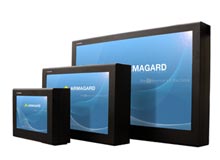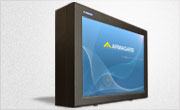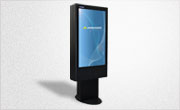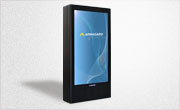Three Choices to Make in Installing Outdoor Digital Signage
Posted by: Richard Williams | Posted on: | 0 Comments
Outdoor digital signage has several applications. For retailers and advertisers it provides a wide-reaching form of marketing able to connect with huge audiences, ideal for advertising, promotions and branding.
For public buildings such as schools, colleges and libraries, outdoor screens provide an effective form of communication, helping to keep visitors and members of the public informed of news, important information and emergencies. Service industries also find outdoor screens useful, with restaurants using them for digital menu boards and transports companies using the screens to provide timetabling information.
 Obviously, a normal TV screen won’t function outside under the variable weather and temperatures, so when it comes to placing a screen outdoors, installers have to overcome this and several other challenges, to ensure maximum readability and usefulness of the screen.
Obviously, a normal TV screen won’t function outside under the variable weather and temperatures, so when it comes to placing a screen outdoors, installers have to overcome this and several other challenges, to ensure maximum readability and usefulness of the screen.
1. Screen Type
The first choice to make for using an outdoor screen is the screen itself. While many installers may opt to use an particular range of outdoor screens, this doesn’t provide much flexibility. Outdoor TV screens are highly expensive and often restricted in the size available. Another option is to use standard screens protected in an outdoor digital signage enclosure. This enables a more flexible choice of screen, allowing almost any make and model of device to be taken outdoors.
Both plasma and LCD screens can be taken outside, however, whichever screen is used it requires a high brightness level to ensure it can cope with bright sunlight. Many manufacturers now produce high brightness screens that are often three to four times brighter than standard devices.
Another choice to make is the size. People often view an outdoor screen from a good distance away, perhaps on a bus or in a cab, so using a larger sized screen will ensure maximum readability.
2. Location
The next decision that you need to make is where to place the screen. Obviously, the most visible location possible is the most ideal; however, restrictions on permissions and availability of walls to mount the screen on can be restrictive. Choose the best location possible with regards to the maximum visibility, so the screen should face the where the majority of the audience will be passing.
Position the screen as close to eye-level as possible, if you have to place the screen higher up, such as suspending it from a ceiling or wall, angle it so people don’t have to crane their necks to read it.
3. Protection
Choosing the best method of protection is dependent on what type of screen you have decided to deploy. An outdoor screen may not only be the more expensive choice, it may also not provide the most comprehensive form of protection. While waterproof an able to cope with variable temperatures, an outdoor digital signage screen needs also to have adequate physical protection.
A steel LCD enclosure will not only protect the screen from the weather and variable outdoor temperatures, but will also provide physical protection against knocks, vandalism and accidental impacts.
Post shortlink:
Popular Products
LCD Enclosure
Need armor for your LCD/LED screen(s)? Outdoors or inside the versatile LCD enclosure protects against thieves, vandals & the weather. Installation idea: NFL stadiums.
Outdoor Digital Signage
Exclusive 46” outdoor screen protection. Dubbed the ‘Totem’, due to its distinct design, it repels damage threats, but attracts audiences. Installation idea: Drive-thru restaurants.
Portrait Flat Panel Enclosure
Safeguard your eye-level advertising display screen(s), indoors or outdoors. Completely customizable, add exciting features like touch screen technology. Installation idea: Restaurant frontages.
Indoor Digital Signage
Popular purchase for retail outlets! Great for ‘point of sale’ persuasion, boost your brand with static & motion advertising from a single unit! Installation idea: Mall of America.




